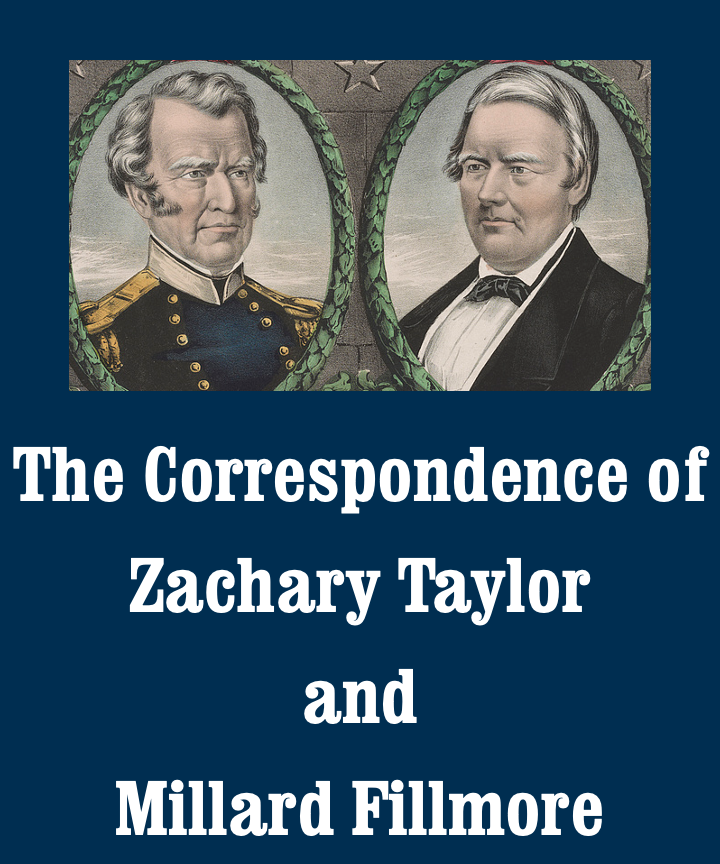These have been a busy couple of months at the Taylor-Fillmore project. True, they have not been busy in exactly the ways I had planned. I haven’t visited closed libraries and archives to locate new manuscripts. I haven’t flown on canceled flights to confer with other editors. COVID-19 has had its impact. But that impact has been negligible compared with the medical, economic, and emotional challenges that so many people today are facing.
Taylor, perhaps, can offer a glimmer of hope. In his first and only Annual Message to Congress—what we today call the State of the Union—he reflected on the cholera pandemic that in recent years had ravaged America and the world. “[T]he destroying angel,” he lamented, “for a time visited extensive portions of our territory with the ravages of a dreadful pestilence.” By the end of 1849, however, “the Almighty has at length deigned to stay his hand and to restore the inestimable blessing of general health to a people who have acknowledged His power, deprecated His wrath, and implored His merciful protection.” Though long before the development of a cholera vaccine, that pandemic had abated.
For our part, fortunately, preventive measures such as social distancing have not prevented progress in assembling and toward publishing the twelfth and thirteenth presidents’ letters. Years of work by archivists and librarians have enabled us to move forward. Employees at the National Archives, the Library of Congress, and other repositories around the country have digitized many of their collections. We will visit those facilities, when doing so is safe, to find the numerous letters that exist only in manuscript form. But, while sheltering in place, we can find, view, and transcribe the letters available in digital format. Our database of letters thus is growing by the hundreds. (And my cats get to help.)
Taylor and Fillmore corresponded with both the famous and the obscure. Among the biggest names I’ve encountered recently are the future Confederate president (and Taylor’s son-in-law) Jefferson Davis, the Mexican military and political leader Santa Anna, Britain’s Queen Victoria, and France’s Napoleon III. The lesser-known ones include Mrs. S. M. Greeley (likely Susan M. Herring Greeley, of Maine), who in 1852 sent President Fillmore a copy of Harriet Beecher Stowe’s new book Uncle Tom’s Cabin. The Fillmores were avid readers and established the first White House library. Millard’s wife, Abigail Powers Fillmore, enjoyed the antislavery novel. The president himself, in his response to Greeley, wondered ominously whether the debate over slavery “may not rend this Union asunder.” Like the many white Americans who believed that free blacks and whites could never live together in peace, he also speculated whether gradually emancipated African Americans might be expelled from the United States to Africa. The original manuscript of that response is part of the Shapell Manuscript Foundation’s digitized collection.
Besides the fascinating letters, exciting developments at the project have included new additions to our staff. Earlier this month we welcomed Gabriella Siegfried as our editorial assistant. A graduate of Mars Hill University, Gab is now working toward her M.P.A. here at American University’s School of Public Affairs. She’s also a sustainability coordinator for a consultancy group in Orlando. She brings enthusiasm and meticulousness to her work here, and her degree in political science and Spanish is coming in handy. Taylor and Fillmore received letters in numerous languages, including Spanish ones from diplomats and politicians throughout Latin America. Our edition will include English translations of those, which Gab is helping to make possible.
What’s more, two undergraduate summer interns joined us just this week. Zoe Golden and Gretchen Ohlmacher both study at St. Olaf College. Zoe is a junior double majoring in history and psychology; Gretchen is a senior majoring in history and Russian. We’re delighted to partner with St. Olaf, which recently introduced a public history area of interest within its history major, to give students experience in making historical resources broadly accessible. Given their zeal for and rapidly growing skills at deciphering nineteenth-century manuscripts, we look forward to Zoe’s and Gretchen’s making valuable contributions to the project.
We’ve also begun working with colleagues to develop an innovative digital editing and publishing platform. The Andrew W. Mellon Foundation, in partnership with the National Historical Publications and Records Commission, is funding collaboratives of documentary editors across the country. You can learn more about ours from this press release; in short, the University of Virginia–based collaborative aims to find efficient ways for us to do our work and sustainable ways for us to publish primary historical documents online. Over the coming years, it will help us to bring you Taylor’s and Fillmore’s letters as quickly, accurately, usefully, and affordably as possible. Since March I have been meeting with members of the other participating projects and institutions—virtually, of course. (My cats occasionally participate in those meetings, too.)
Finally, this week Americans celebrated Memorial Day. We honor those who have given their lives in service to their country, including members of the military who have succumbed to COVID-19. We thank them and their loved ones for that immeasurable sacrifice. Taylor, who served for four decades as an army officer, saw far too many soldiers and officers die from violence and disease. During the Mexican-American War, yellow fever was particularly lethal. In his official reports and private letters, the general frequently bemoaned the casualties and honored the bravery of the dead. On May 9, 1846, for example, after victories at Palo Alto and Resaca de la Palma, he wrote to the army surgeon Robert C. Wood. The letter is now part of the Huntington Library’s Zachary Taylor Letters collection. “So brilliant an achievement,” Taylor acknowledged, “could not be expected without heavy loss on our side, we have many killed & wounded. . . . Majr Brown died to-day from a severe injury he recd from a shell; which has thrown a gloom over the whole affair.”
